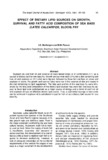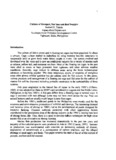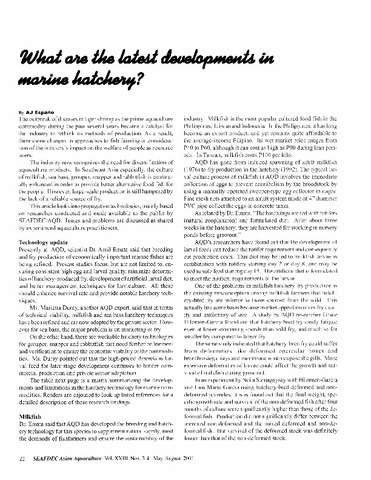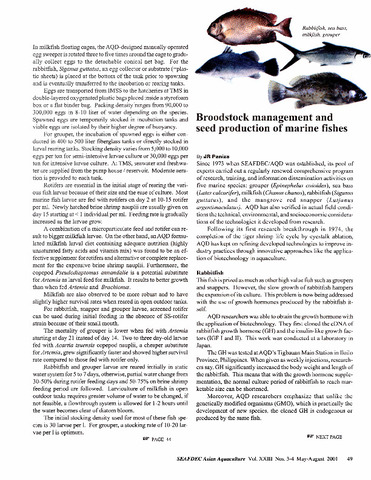Effect of dietary lipid sources on growth, survival and fatty acid composition of sea bass (Lates calcarifer, Bloch) fry
Share
Abstract
Soybean oil, cod liver oil and coconut oil were tested singly or in combination (1:1) as a source of dietary lipid for sea bass fry. Growth and survival rates of fry fed a diet containing cod liver oil and soybean oil (1:1 ratio) were highest, followed by those fed cod liver oil alone and soybean oil alone. Fry growth and survival rates were low in the coconut oil diet and lowest in the diet containing no lipid supplement. The fatty acid profiles of the sea bass fry were influenced by the fatty acid composition of the dietary lipid sources they were fed. Sea bass fry appear to favor lipid over carbohydrate as a major source of energy and a blend of cod liver oil and soybean oil was an effective dietary lipid source. Thus, a substantial savings in feed costs can be achieved if soybean oil is substituted in part for fish oil as a dietary lipid source for sea bass fry.
Suggested Citation
Borlongan, I. G., & Parazo, M. M. (1991). Effect of dietary lipid sources on growth, survival and fatty acid composition of sea bass (Lates calcarifer, Bloch) fry. The Israeli Journal of Aquaculture-Bamidgeh , 43(3), 95-102. http://hdl.handle.net/10862/1329
Subject
Taxonomic term
Collections
- AQD Journal Articles [1248]
Related items
Showing items related by title, author, creator and subject.
-
Culture of grouper, sea bass and red snapper
Toledo, Joebert D. (University of the Philippines Aquaculture Society, Inc., 2001)Marine fish production has increased dramatically in the past ten years and majority of the cultured species were produced in Asia in 1992. Increase in production was accompanied with concerns on increasing outbreak of ... -
What are the latest developments in marine hatchery?
Españo, A. J. (Aquaculture Department, Southeast Asian Fisheries Development Center, 2001) -
Broodstock management and seed production of marine fishes
Paniza, J. R. (Aquaculture Department, Southeast Asian Fisheries Development Center, 2001)




